Last updated on December 6, 2023
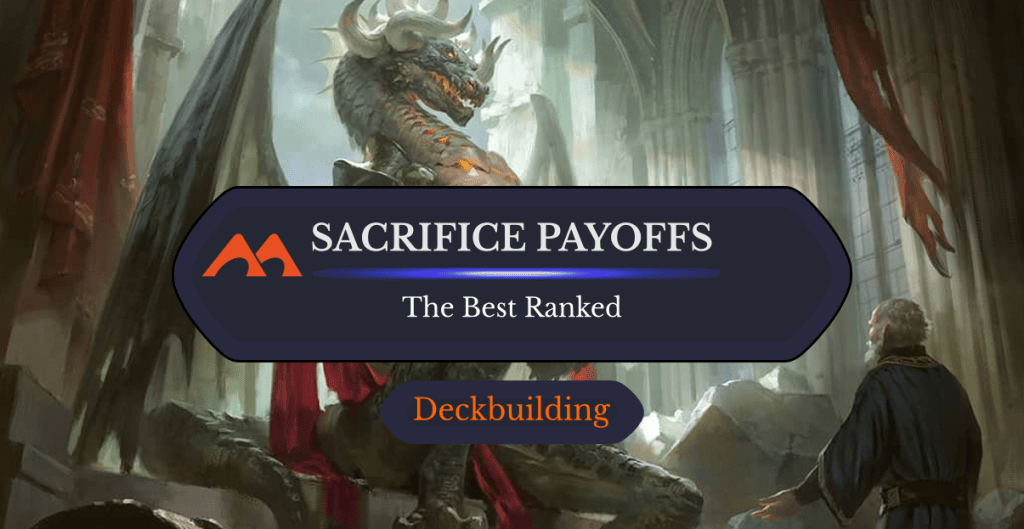
Korvold, Fae-Cursed King | Illustration by Wisnu Tan
Lots of MTG decks have a very heavy sacrifice component. That’s right, you’re actually sacrificing your own permanents for value. These archetypes are usually called aristocrats, paying homage to Falkenrath Aristocrat and other similar cards.
Aristocrat decks have cards that let you sacrifice creatures or permanents and cards that do something good for you (or bad for your opponents) when you sacrifice permanents. You’ll actually want a mix of cards that allow you to sacrifice, cards that want to be sacrificed, and sacrifice payoffs. So let’s check out the best sacrifice payoffs!
What Are Sacrifice Payoffs in MTG?

Bag of Devouring | Illustration by Sean Murray
A payoff in MTG is everything that rewards you for doing something peculiar and specific, so a sacrifice payoff is a card (or cards) that gives you a benefit whenever you sacrifice permanents. Most often you’re sacrificing your own creatures, but there are cards that allow you to sacrifice other permanents like artifacts, enchantments, or lands. You can say that a player is playing a sacrifice deck when they’re sacrificing permanents for their own benefit.
I want to emphasize the difference between sacrifice outlet and sacrifice payoff. A sacrifice outlet is a card that allows you to sacrifice a permanent, often giving you a benefit if you do. Some examples are Viscera Seer, Ayara, First of Locthwain, and Village Rites. On the other hand, a sacrifice payoff is a card that says, “whenever you sacrifice a creature (or permanent)” followed by rules text that gives you a perk. A good example is Mayhem Devil, but there’s also cards like Mortician Beetle or Korvold, Fae-Cursed King that give you different benefits.
Honorable Mentions
Cards like Blood Artist, Grave Pact, or Zulaport Cutthroat are the backbone of sacrifice decks or aristocrats decks because these decks make creatures die, and you want to profit from it by dealing damage to players or something like that. For this list, I’ll include only cards that work when sacrificing permanents, so they’re out. Although these cards are sacrifice payoffs in the bigger picture, I’m narrowing the list with this imposed restriction.
#18. Mortician Beetle

Mortician Beetle is the simplest one on this list: it works only for creatures and it sees a little play in Pauper aristocrats decks and some EDH decks. At least it can grow very quickly if each player sacrifices a creature.
#17. Blood Aspirant
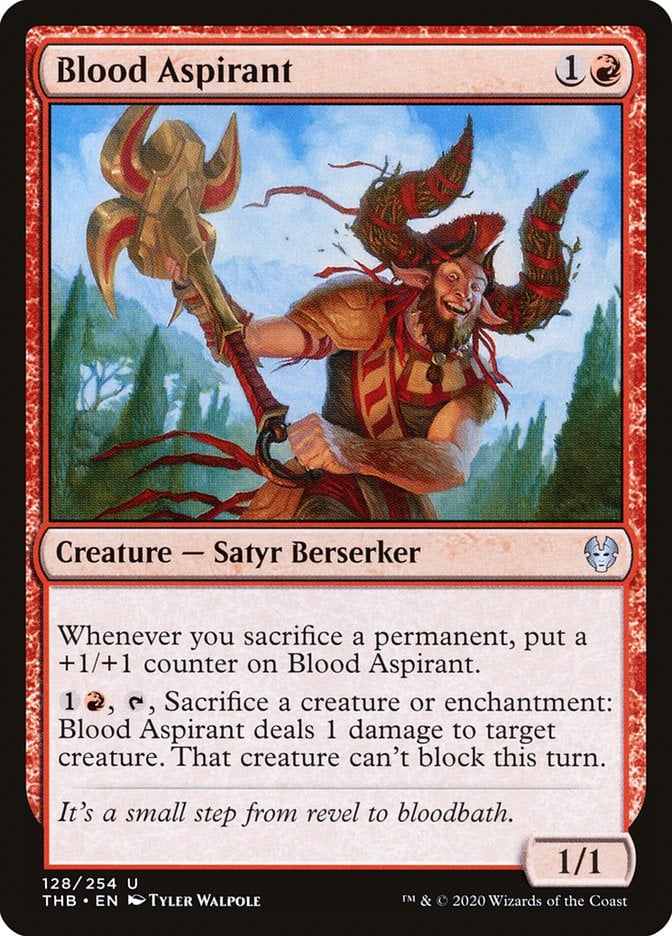
Blood Aspirant is a sacrifice payoff and outlet in the same card. You can use it to ping a target or take a key blocker out of a given combat and it’ll grow very big in a sacrifice deck.
#16. Bag of Devouring
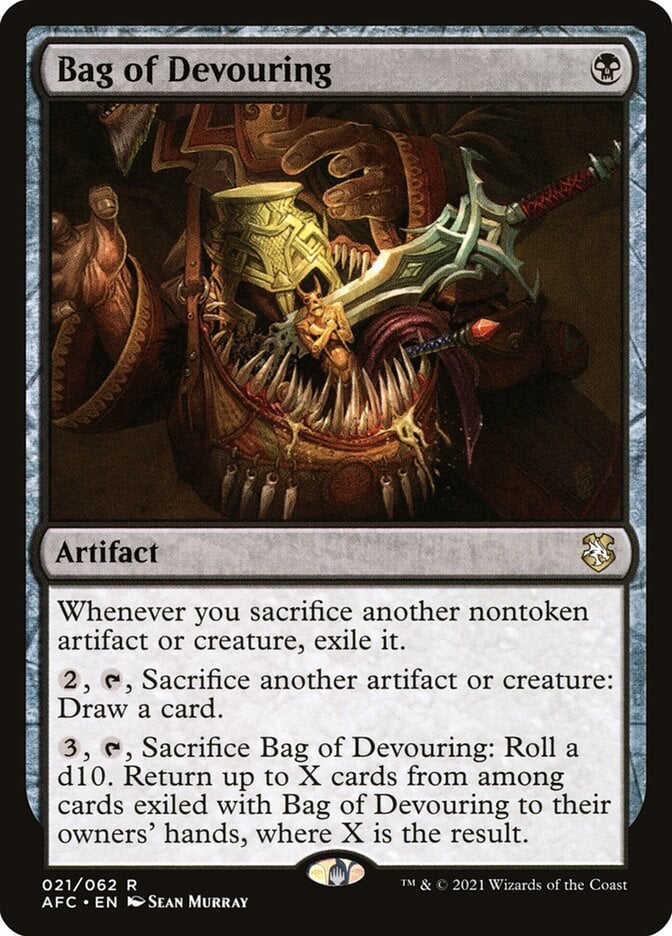
Bag of Devouring is very similar to Prowling Geistcatcher in the sense that you can sacrifice cards and stash them int the Bag. After sacrificing the Bag, you get to retrieve those cards. They go back into your hand, so the best cards to sacrifice to the bag are cards with good ETB/LTB abilities, preferably cheap ones. You’ll also have to roll a D10, so you’ll reliably get 3-4 cards back.
#15. Prowling Geistcatcher
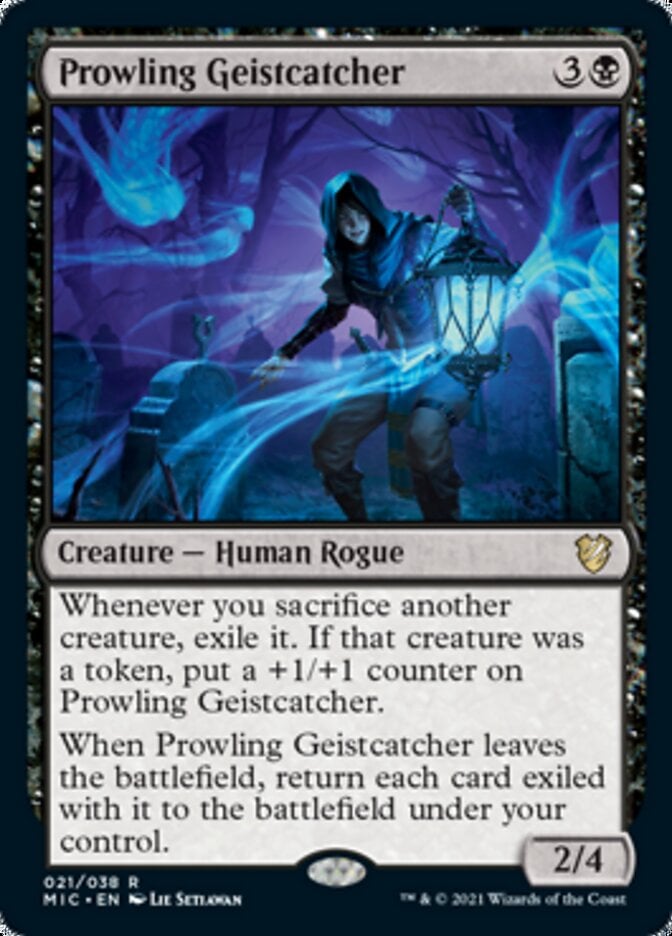
Prowling Geistcatcher is at home in a deck full of good ETB creatures. You can sacrifice them once they become outclassed, and when the Geistcatcher dies, you’ll reload on your ETB creatures. It’s very different from creatures on this list, and it has a different application. I rate it a little better than the Bag of Devouring in the sense that you’ll get the cards back to the battlefield and you don’t depend on the die roll to get all the cards exiled with Prowling Geistcatcher.
#14. Smothering Abomination
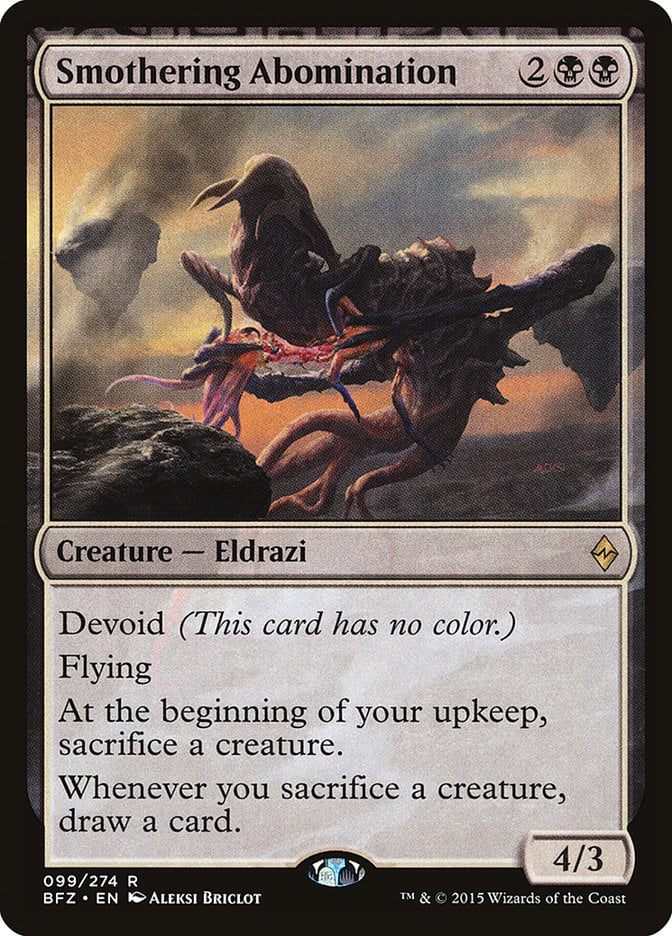
With Smothering Abomination, you can fill your hand pretty quickly if you have lots of sac fodder lying around, but there’s a main downside: it’s really, really bad on an empty board. At least if you sacrifice the Abomination, you’ll draw a card. This card is at best in stax decks and decks that produce lots of tokens or decks that work with symmetrical sacrifice effects.
#13. Fleshtaker
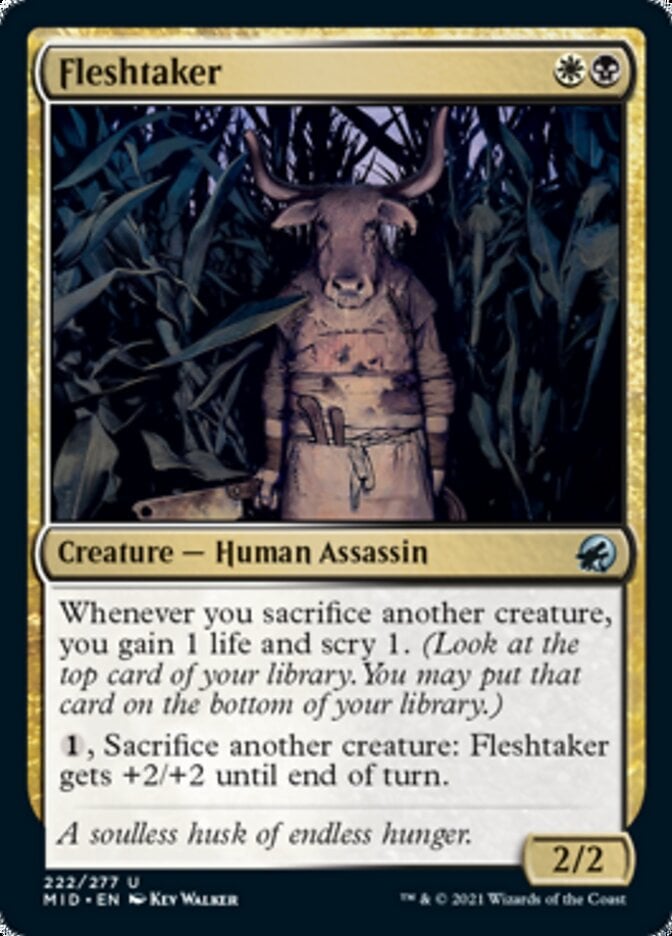
Fleshtaker combines aspects of cards like Nantuko Husk and Viscera Seer, being able to sacrifice creatures and generate benefits. Scrying and gaining life for free each time you sacrifice a permanent is great, and in lifegain decks you can trigger lots of your synergies.
#12. Thraximundar
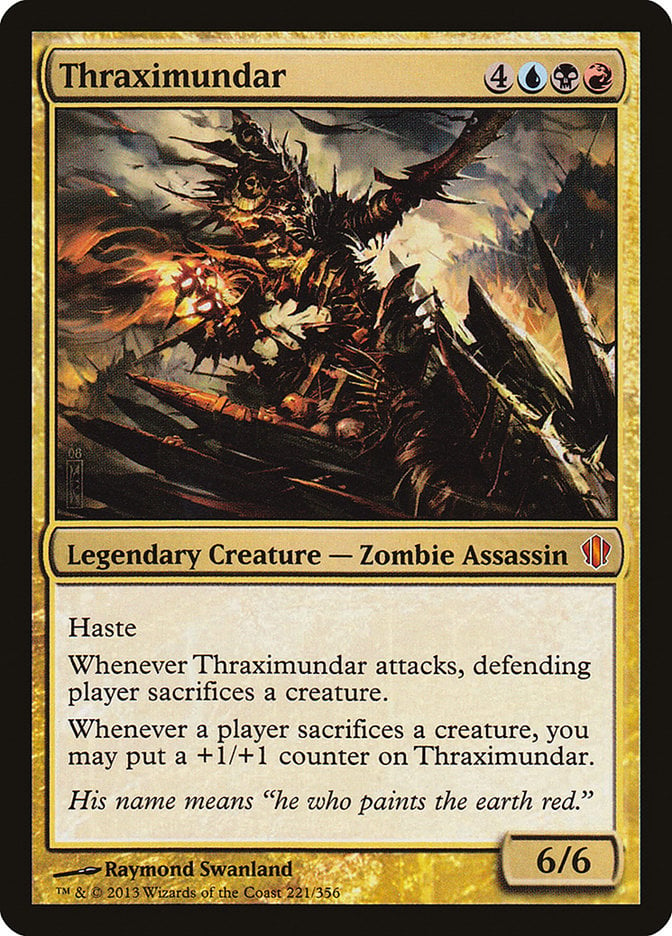
As you can see, 2009 MTG was a lot simpler, but Thraximundar still packs a punch in sacrifice decks. Thraximundar feeds itself considering that it’s a massive 6/6 creature with haste, and the opponent is forced to sacrifice a creature when it attacks. As with many sacrifice payoffs, this card gets a +1/+1 counter each time a creature is sacrificed. If you consider that sacrifice decks are usually very grindy, slowly draining people with cards like Blood Artist, this card takes a completely different approach to the matter.
#11. Furnace Celebration
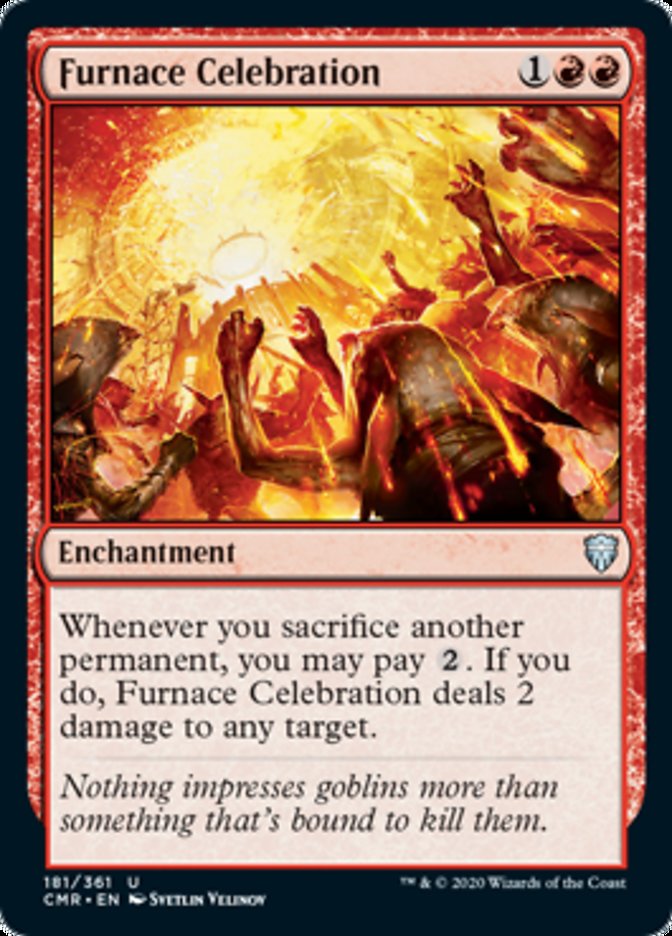
Here’s one of the most innovative Limited cards. Scars of Mirrodin had Furnace Celebration as one of its viable Draft archetypes, and each time you sacrifice a permanent, you may pay and deal 2 damage to any target. Furnace Celebration is a Shock factory, and in sacrifice decks it adds quickly to the damage generated by other sacrifice payoffs like Mayhem Devil.
#10. Eloise, Nephalia Sleuth
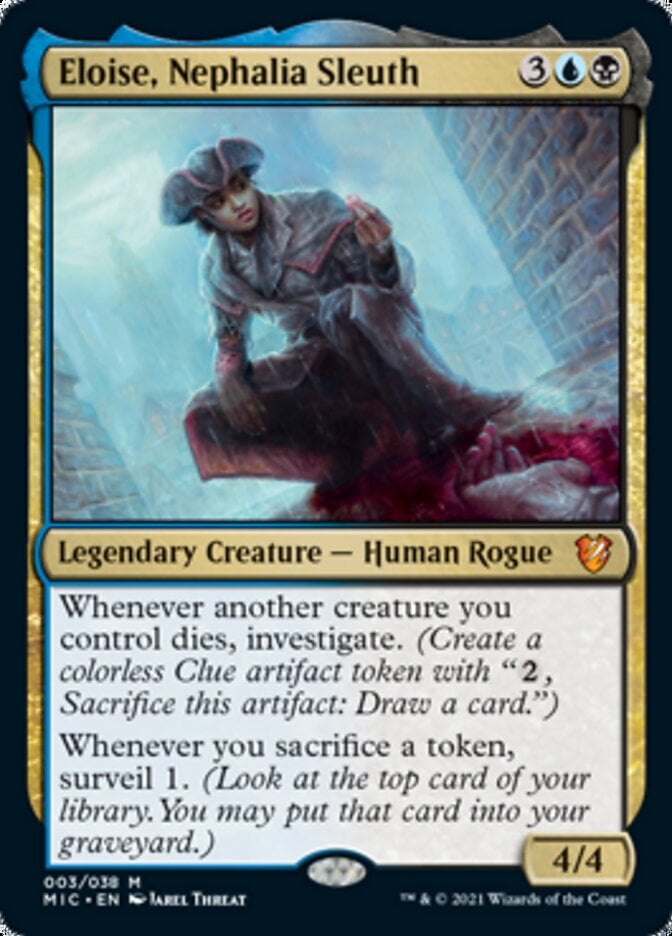
Eloise, Nephalia Sleuth is a Dimir commander that cares specifically about sacrificing tokens. That can range from creatures to Clues and Treasures, and Eloise can also investigate a lot during a given game, which translates to card advantage. Although the payoff isn’t great like dealing damage or drawing cards, you’ll get to surveil a lot, fill your graveyard if you want or get nice card selection, and that opens the way for interesting builds.
#9. Trail of Crumbs

Trail of Crumbs sees play in sacrifice decks, mainly in Explorer, and EDH food decks. Granted, the sacrifice payoff aspect only works for food, but each time you sacrifice a Food token, you’ll get card advantage and selection. In decks that have the Cat/Oven combo, you’ll get to sacrifice a lot of food, get some cards, and have a strong game against midrange and control.
#8. It That Betrays
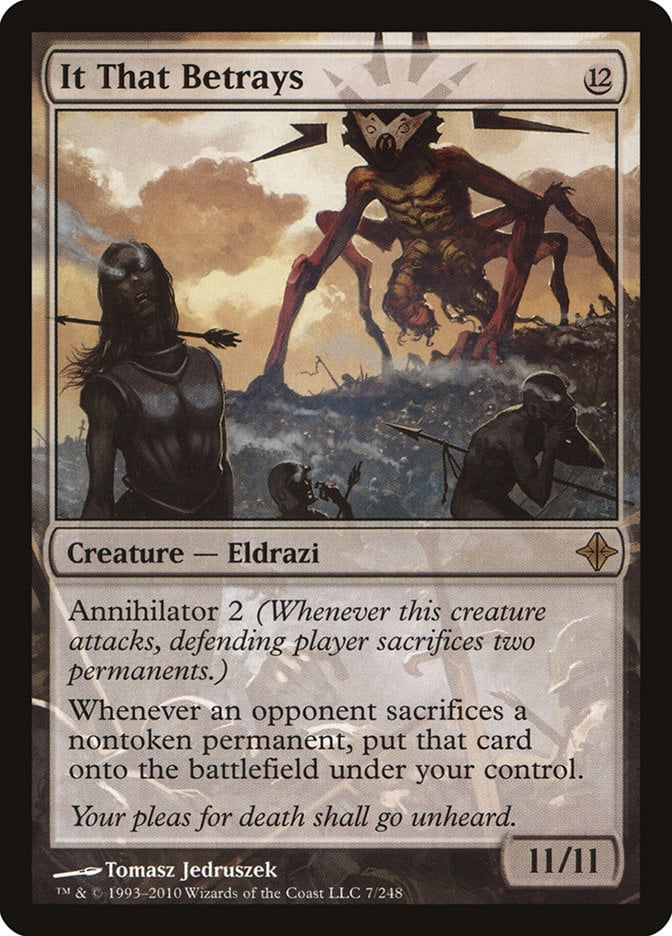
It That Betrays is a 12-mana Tegrid and a good sacrifice payoff, especially in decks that can cheat it into play. Plus, it’s a 12/12 with annihilator, and this card can force opponents to sacrifice permanents and get the engine running. You can use it in Eldrazi decks and decks that ramp a lot. Sacrifice payoffs usually cost 1-3 mana, so if you’ll use this card, think of it more as a 12-mana bomb.
#7. Mazirek, Kraul Death Priest
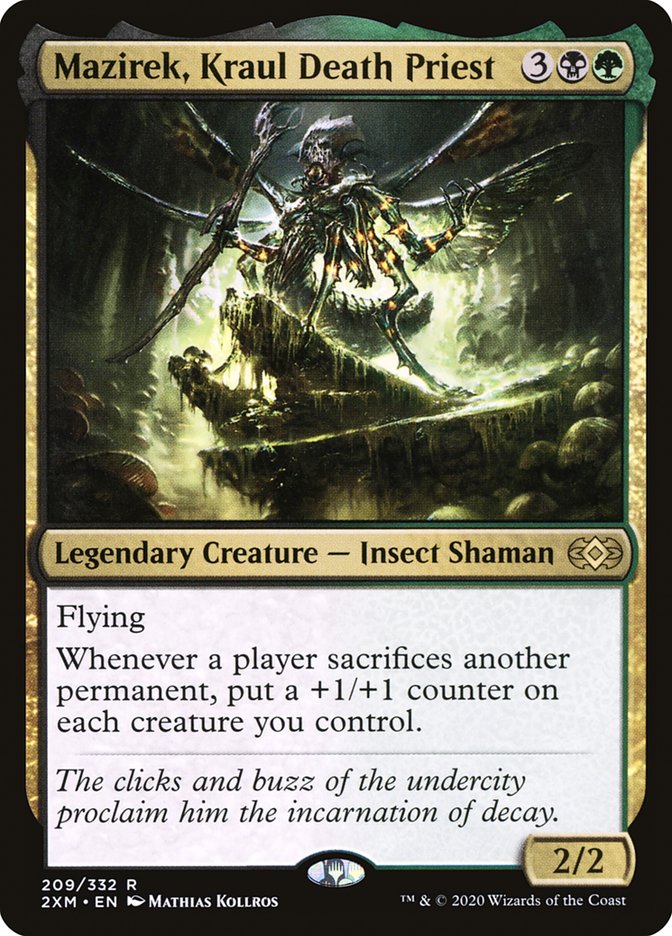
Mazirek, Kraul Death Priest is a clunky but fun Golgari commander to play with. It starts small and dies to almost all the removal spells, but you can quickly build an army of creatures with +1/+1 counters if you keep sacrificing permanents.
It’s weak to board wipes, but powerful if left unchecked. The Lord of the Rings: Tales of Middle-earth set has given this commander a nice boost with cards like Mirkwood Bats and Rise of the Witch-king. You can either go wide by putting counters on various creatures or go tall on Mazirek and beat people down with it.
#6. Ashnod the Uncaring
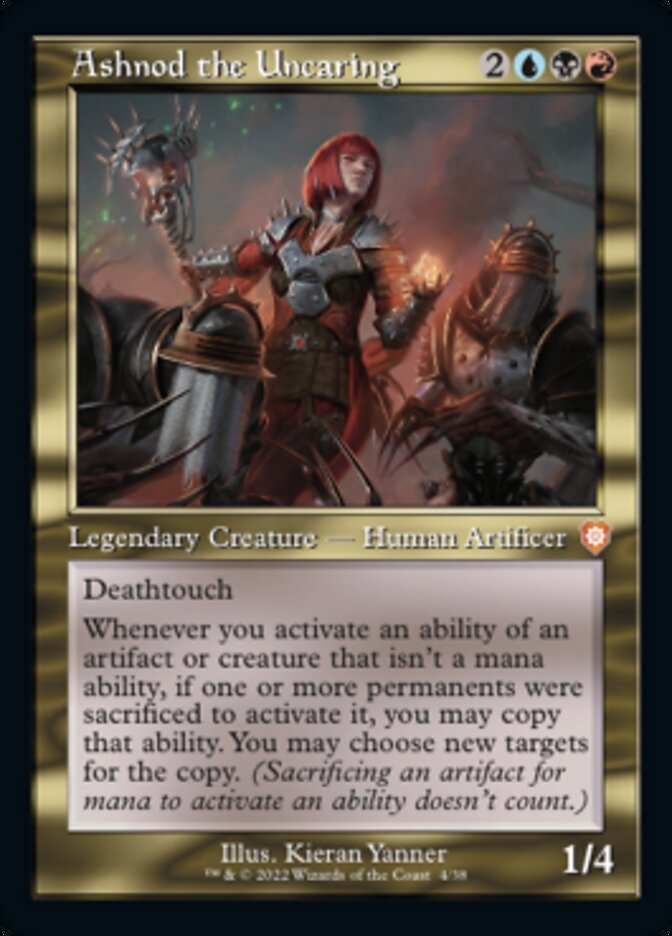
Ashnod the Uncaring is a powerful Grixis commander that cares about sacrifice outlets, effectively doubling the benefit they provide with a given activation. Suddenly each card that says “sacrifice this: draw a card” gives you two cards, while Clue and Food tokens give you twice the benefits when sacrificed. Time Sieve is a good one here because it lets you play two extra turns.
It doesn’t work with mana though, so you can’t abuse Treasure or the mana generated by cards like Ashnod's Altar. Note that the death trigger isn’t doubled; you’ll need cards like Teysa Karlov for this.
#5. Mirkwood Bats

Mirkwood Bats is a god-send card for people looking to abuse token creation and sacrifice, particularly Treasure tokens. Treasures are already created at a good rate thanks to cards like Dockside Extortionist or Smothering Tithe, and since you sacrifice them eventually, each treasure token deals 2 damage to all players.
With this card around, already strong cards like Dockside Extortionist get a whole lot better, and that’s saying something. Mirkwood Bats also works with creature tokens and Clues/Food, so expect this card to fit lots of different decks and hit your EDH table often.
#4. Juri, Master of the Revue
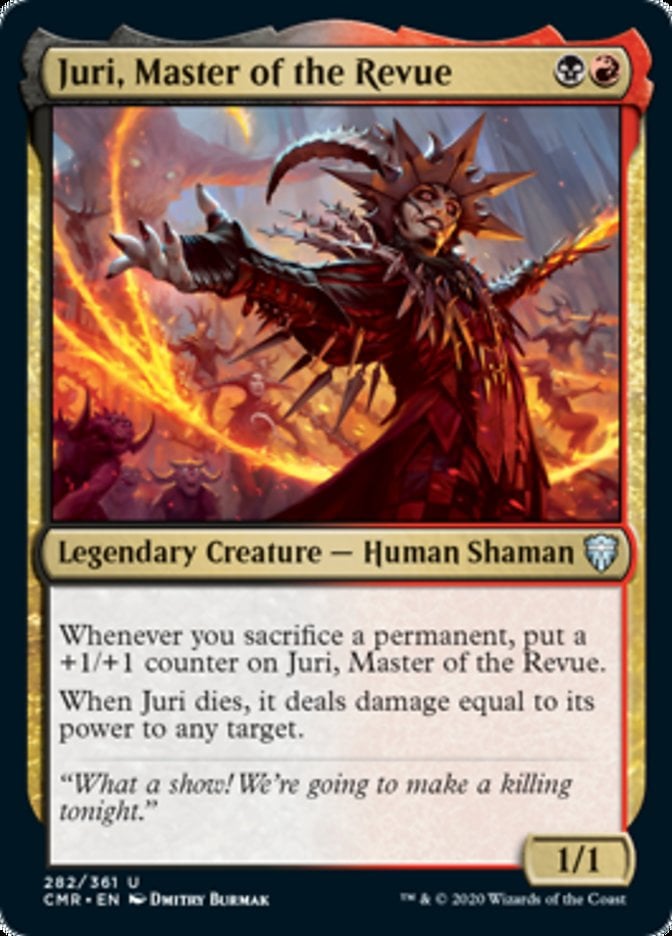
Juri, Master of the Revue is a very straightforward Rakdos commander. It comes down early and grows with cards that can be sacrificed, most notably Treasure, but fetchlands also do it. While you’re sacrificing things, you’ll have a very large Juri that can hit your opponents hard, win via commander damage, or deal lots of damage to a certain target if it’s removed. Ruthless Technomancer is an interesting combo because you’ll sacrifice your big Juri, generate lots of Treasure, cast it again, sacrifice all the Treasure for mana, and have your commander again ready to fight, almost as big as it was before. Another nice interaction is with Fling since you’ll deal double the damage.
#3. Tergrid, God of Fright

Tergrid, God of Fright is an awesome commander and sacrifice payoff. It’s just that it’s a payoff for opponents sacrificing their stuff, because you’ll get to keep their sacrificed permanents. Tergrid decks want to make their opponents discard or sacrifice as much as possible, and cards like Plaguecrafter shine here since both modes benefit you. With this card as your commander, a card like Death Cloud is a game changer since you’ll be the one left with all their sacrificed and discarded goodies.
#2. Mayhem Devil

Mayhem Devil was the sacrifice matters card in Standard, and it still sees play in Explorer/Pioneer. Dealing a damage to any target whenever a permanent is sacrificed is a strong effect, and it triggers on any sacrifice, not just yours. It alone turns the Cat/Oven combo into a machine gun, and it’s the card you’ll definitely not want to see in a sacrifice mirror match since it turns your game plan back at you.
#1. Korvold, Fae-Cursed King
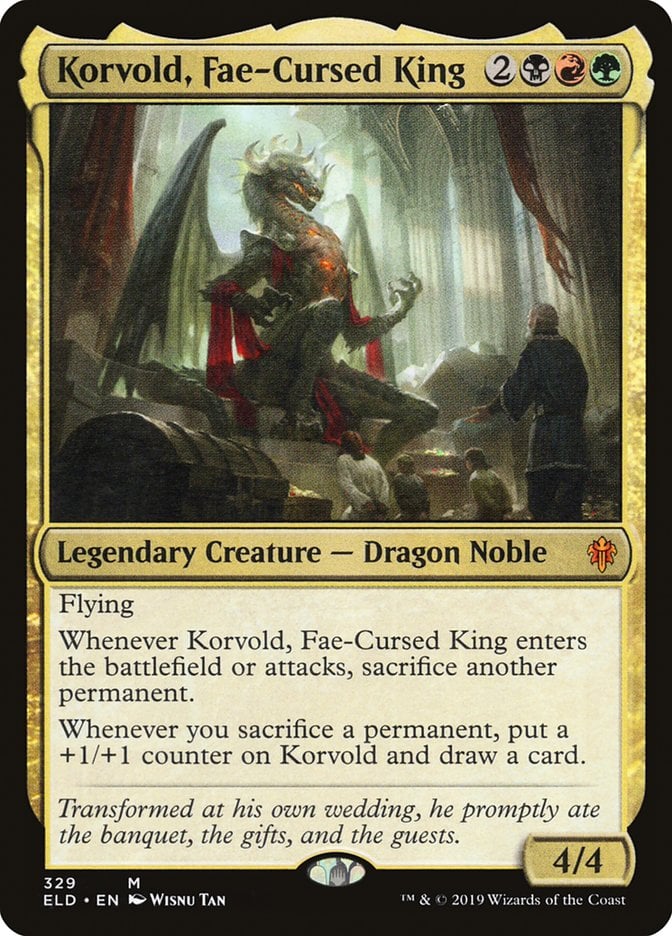
It’s not that clear that Korvold, Fae-Cursed King is above Mayhem Devil, because both cards have their merits. Korvold costs three colors of mana and it’s more expensive overall, but the benefit it provides is huge. First, you get a 5/5 flying and a card right away, and an unanswered Korvold wins the game. Second, Korvold can be your Jund Commander, and a fairly powerful one at that. Along with Trail of Crumbs, this card is the reason why people play green in their sacrifice decks, and drawing more cards often means more fun.
Wrap Up
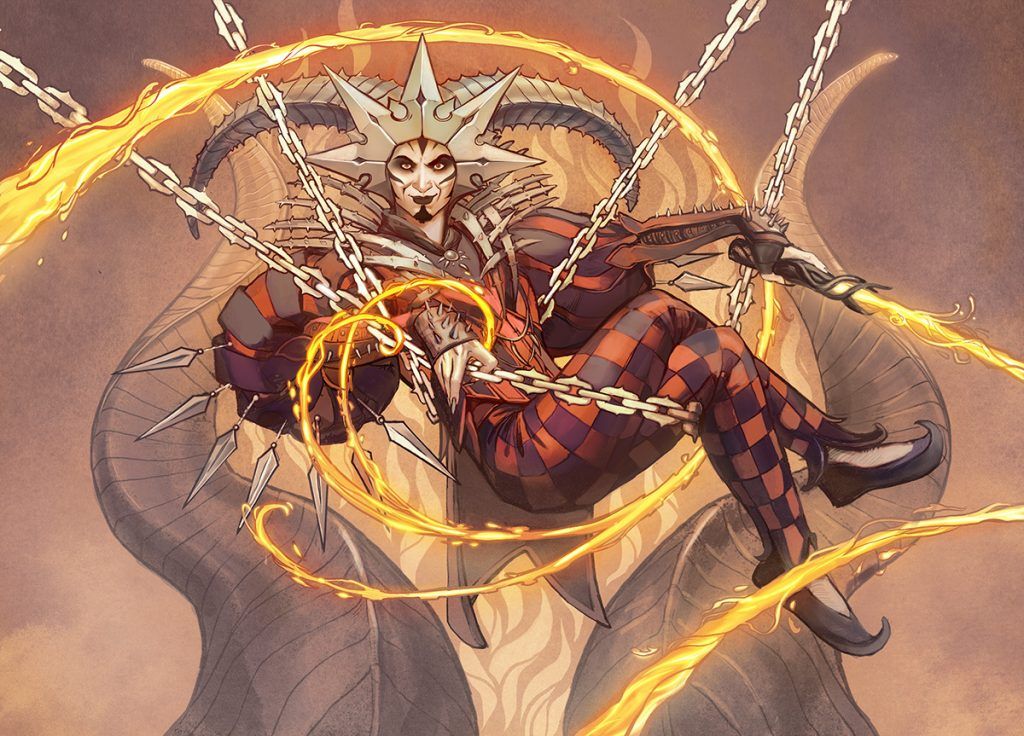
Juri, Master of the Revue (Multiverse Legends) | Illustration by Julie Dillon
Anyway, that’s all from me on sacrifice payoffs today. Sacrifice decks are usually on the Johnny side of things, and it’s a style of deck I enjoy playing. Thanks to the popularity of the Commander format, more cards that build sacrifice engines and reward you for following this strategy are being printed, and I’m all for it.
We can also see by the number of decklists posted online that sacrifice Commander decks are very, very popular. What are your favorite interactions involving sacrifice payoffs? Let me know in the comments section below, or leave a tweet for us at our Draftsim Twitter.
Thanks for reading folks, and may your sacrifice interactions in MTG always pay off.
Follow Draftsim for awesome articles and set updates:

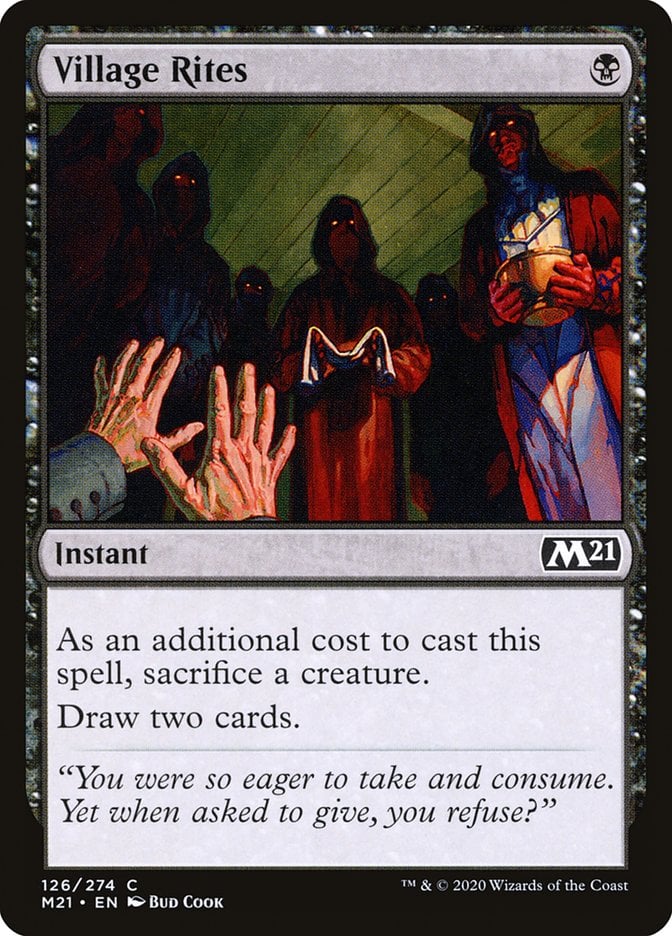
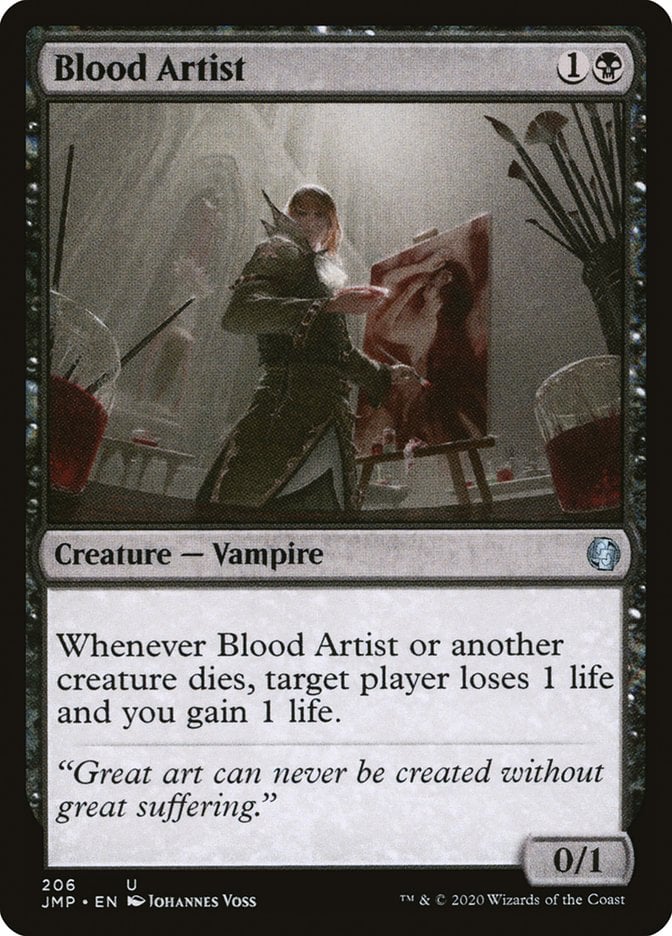
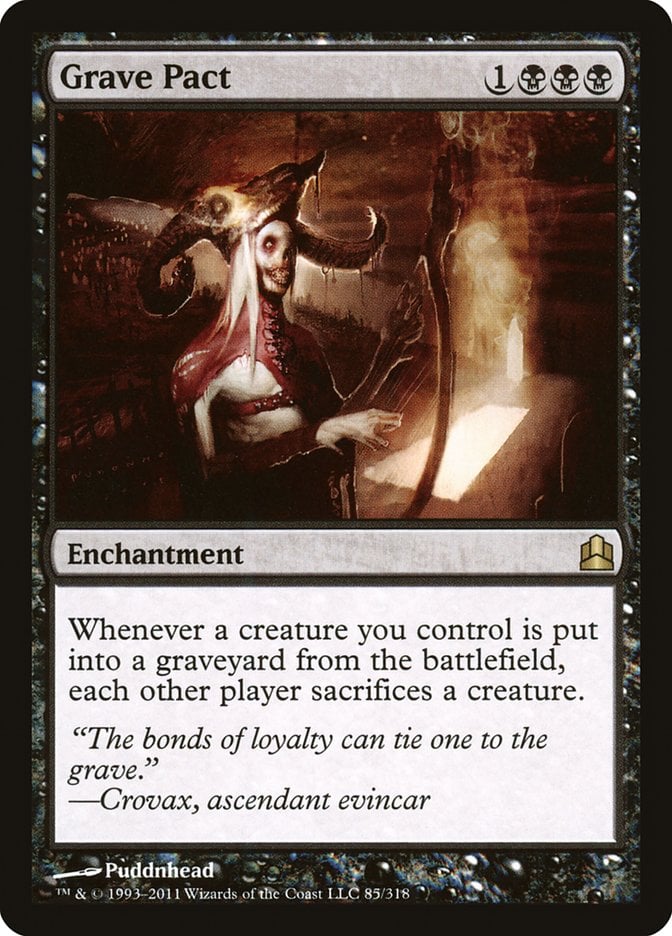
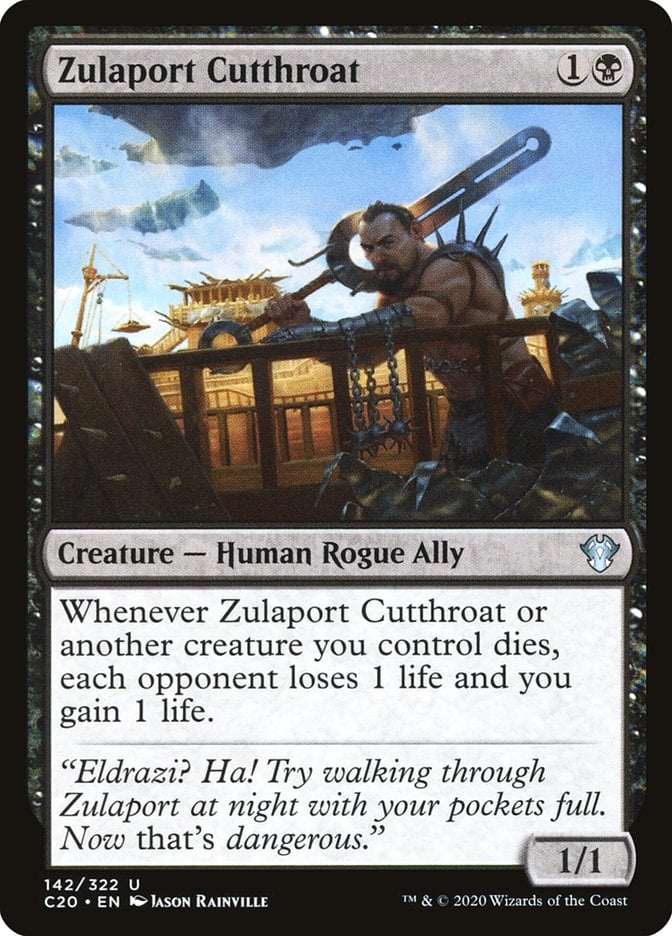


Add Comment